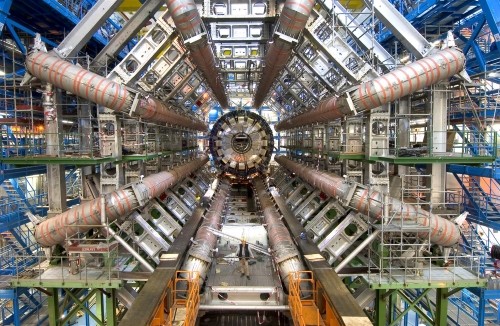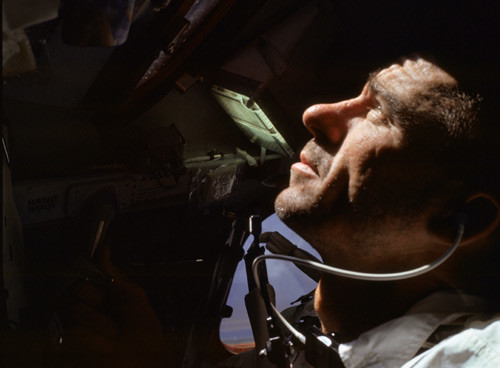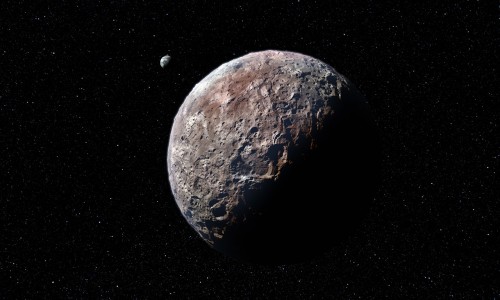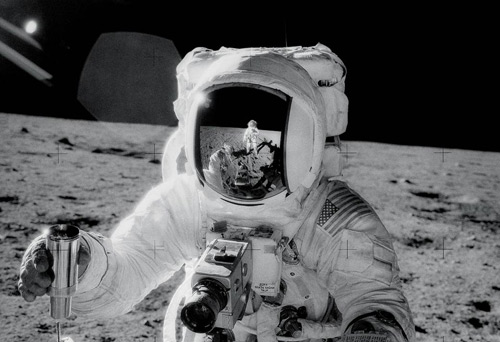Tag archives: NASA
Live space station upgrade, more zombie physics, T-shirts for LIGO

Working in space: A still image from the NASA spacewalk video. (Courtesy: NASA)
By Hamish Johnston
NASA is live streaming a video of a spacewalk on its Facebook page, and you just might be able to catch it live from the International Space Station – or watch it again. The video shows astronauts Shane Kimbrough and Peggy Whitson upgrading the space station’s power system – and it looks like hard work to me.
View all posts by this author | View this author's profile
Plush toys launched into space, interplanetary mining missions and more
By Tushna Commissariat
The European Space Agency’s (ESA) Rosetta spacecraft has, as of this week, spent two full years in orbit around comet 67P/Churyumov–Gerasimenko, since it reached its destination in August 2014. While Rosetta was the mothership, it also deposited its “baby” lander called Philae onto the comet’s surface in November that year. Sadly Philae was switched off in July this year. If you feel like you want to relive the excitement of the initial launch, take a look at the video above. The folks over at Design and Data, who created Rosetta’s iconic cartoons and memorabilia for ESA, launched a plush-toy version of the spacecraft into space, to see how it would fare. Watch the video to see how their “mission” played out.
View all posts by this author | View this author's profile
Sporty physics, the pub in a Faraday cage, LEGO NASA women and more
By Michael Banks and Tushna Commissariat
The Rio 2016 Olympics will kick off tomorrow and over the next three weeks, while you enjoy watching the world’s top athletes compete in the huge variety of sports, spare a thought for the physics involved. From how to throw a ball to running, from pole vaulting to golf, physics and sport are fellow brethren. Head on over on the JPhys+ blog to read “The big physics of sport round-up!” post and watch our video series above, in between cheering on your favourite teams.
View all posts by this author | View this author's profile
Killer asteroid bust-up, exposing academic plagiarism, #IAmAPhysicist and more

Time-lapse image of the asteroid Euphrosyne as seen by NASA’s WISE space telescope, which is used by NEOWISE to measure asteroid sizes. (Courtesy: NASA)
By Hamish Johnston
First-up in this week’s Red Folder is a tale of killer asteroids, hubris and peer review from the Washington Post. The science writer Rachel Feltman has written a nice article about a claim by physicist-turned-entrepreneur Nathan Myhrvold that NASA’s research on asteroids that could potentially collide with Earth is deeply flawed. On Monday, Myhrvold posted a 111-page preprint on arXiv that argues that asteroid radii measured by NASA’s NEOWISE project are far less accurate than stated by NASA scientists. What’s more, Myhrvold seems to suggest that NEOWISE scientists have “copied” some results from previous asteroid studies.
Myhrvold began his career as a theoretical physicist and, after a stint as Microsoft’s chief technology officer, founded an intellectual-property firm. He has never worked in the field of asteroids, yet he has taken great exception to some of the physics and statistical analysis underlying the NEOWISE results. His paper has been submitted to the journal Icarus, but has not yet passed peer review – unlike the NEOWISE results. In her article, Feltman ponders why Myhrvold is actively promoting his controversial work – he was featured in a New York Times article on Monday – before it has passed peer review. She also speaks to several NEOWISE scientists, who are not amused.
‘New boson’ buzz intensifies at CERN, fire prevention in space and Neil Turok on a bright future for physics

ATLAS under construction: has the experiment gone beyond the Standard Model? (Courtesy: ATLAS)
By Hamish Johnston
Excitement levels in the world of particle physics hit the roof this week as further evidence emerged that physicists working on the Large Hadron Collider (LHC) may have caught sight of a new particle that is not described by the Standard Model of particle physics. If this turns out to be true, it will be the most profound discovery in particle physics in decades and would surely lead to a Nobel prize.
View all posts by this author | View this author's profile
Waves of soup, spying on gravity and touring the solar system

Nathan Myhrvold’s gravity-inspired soup bowl. (Courtesy: Modernist Cuisine)
By Hamish Johnston
Nathan Myhrvold knows a lot about gravity (he worked with Stephen Hawking) and a lot about food (he wrote Modernist Cuisine) so it’s not really surprising that he has designed a soup bowl inspired by the collision of two black holes. Created in 2014, the bowl was made to hold two different types of soup in swirls of space–time. Now that the LIGO observatory has spotted a gravitational wave from the collision of two such black holes, I’m guessing sales of the bowl will be out of this world.
View all posts by this author | View this author's profile
Scientists battle celebrities, a quantum ‘unconference’ and space travel, past and future
By Tushna Commissariat
Its been a strange week for scientists and celebrities popping up together on the world stage – what with rapper B.o.B and Neil deGrasse Tyson’s very public face-off about the former’s conspiracy theory claims of the Earth being flat – but it didn’t end there. In a celebrity trio that is even more surprising, physicist Stephen Hawking has come together with Hollywood actor Paul Rudd, (most recently starring in the film Ant-Man) in a video narrated by Keanu Reeves. Earlier this week, Caltech’s Institute for Quantum Information and Matter hosted the event One Entangled Evening: a Celebration of Richard Feynman’s Legacy. As a promo of sorts for the event – which had special appearances by Rudd, Reeves, Hawking, Bill Gates and even Yuri Milner, apart from actual quantum physicists such as John Preskill and Dave Wineland – they filmed the above video with Rudd and Hawking battling each other at a game of quantum chess. You will have to watch the video to see who wins.
View all posts by this author | View this author's profile
Preserving Apollo’s data legacy
By Louise Mayor in San Francisco
Day two of AGU Fall 2015 saw the likes of SpaceX CEO Elon Musk and NSF director France Córdova talking in rooms packed full of earth and space scientists. But what grabbed my attention was a short talk by Nancy Todd of NASA’s Astromaterials Acquisition and Curation Office.
NASA being NASA, I assumed that all its data from completed missions would by now have been digitized and made accessible. That, I learned, is not true – but Todd and her colleagues are on the case.
View all posts by this author | View this author's profile
Pushing towards the human–Martian frontier

Eye on the sky: NASA astronaut Walter Cunningham during the Apollo 7 mission, in October 1968. (Courtesy: NASA)
By Tamela Maciel at the National Space Centre in Leicester
Last week, the planet Mars was under the international spotlight once more as NASA scientists announced that liquid water may still be flowing on the surface of the red planet. Also, the much-anticipated film adaptation of The Martian – a 2011 novel by American author Andy Weir – a science-driven story of human survival on Mars, hit the box office. Mars was also the hot topic at a recent event held at the National Space Centre in Leicester. The guest of honour was Apollo 7 astronaut Walter Cunningham and throughout the hour-long Q&A, he emphasized the need to push the “next frontier” and send humans to Mars.
Cunningham is not a man lacking in confidence or the experience of pushing boundaries. When asked if he ever felt the pressure of the astronaut selection or training process, he said “I thought I could fly anything, any time, anywhere. Was that true? I don’t know. But that’s how I felt.”
View all posts by this author | View this author's profile
Florida’s declining Space Coast, naming mountains on Pluto and silly rock bands

Name game: does that crater look like a Steve, or maybe a Carol? (Courtesy: IAU/L Calçada)
By Hamish Johnston
When I was a young lad back in the late 1960s, my family would join the annual March migration of Canadians to Florida. Along with alligator farms and the endless beaches, the Kennedy Space Center was a popular tourist destination and I can still remember visiting it and getting a solar spinner globe as a souvenir. Sadly, since the end of the Space Shuttle programme in 2011, Florida’s “Space Coast” has fallen on hard times. While there are still rocket launches – there are two planned for April – thousands of NASA employees have been let go and the surrounding communities look worse for wear. The New York-based photographer Rob Stephenson has put together a collection of images taken in and around the centre that he calls “Myths of the Near Future”. To me the photographs evoke the allure of the space age as well as the inevitable decline of any human endeavour.
View all posts by this author | View this author's profile
